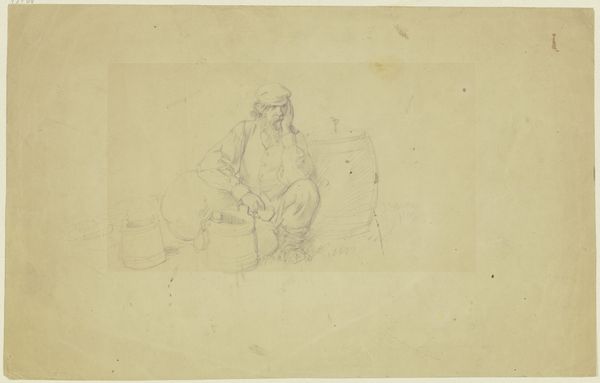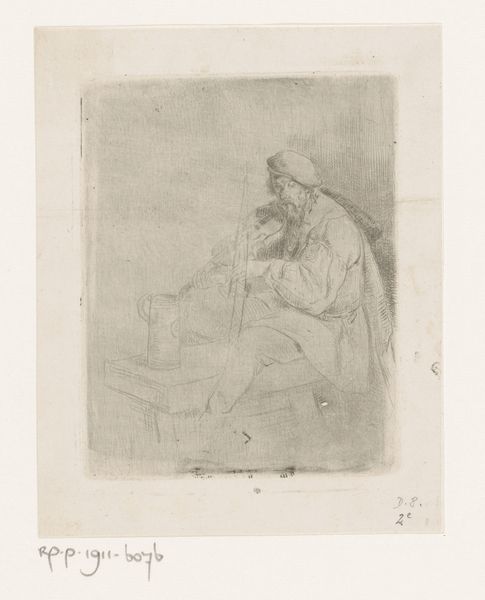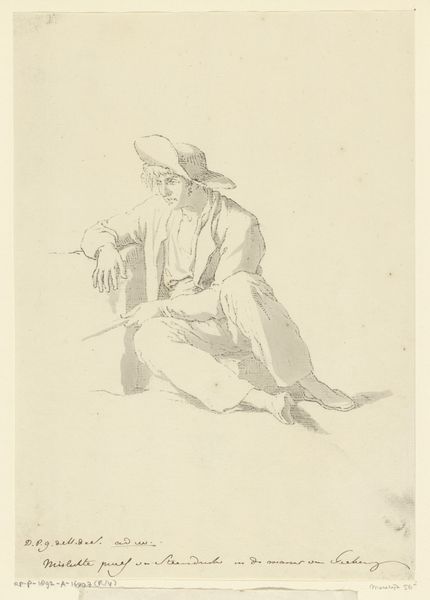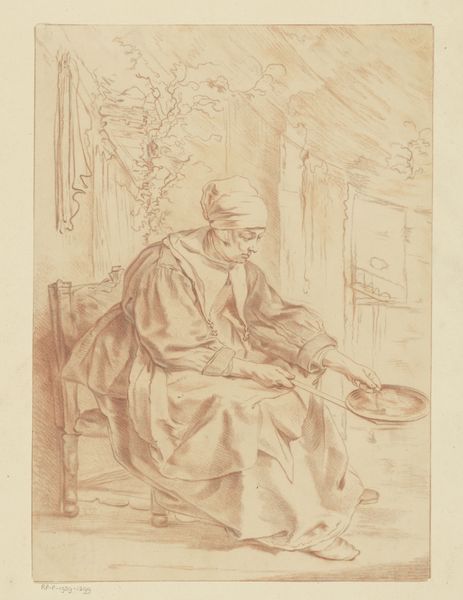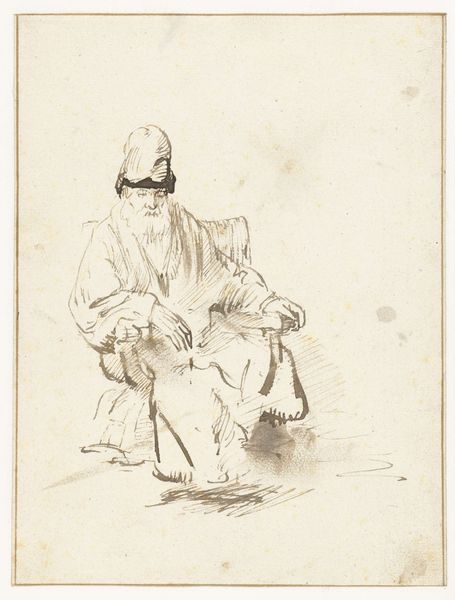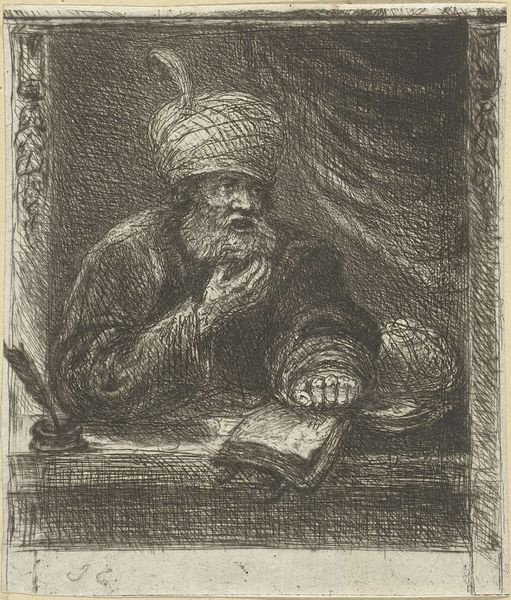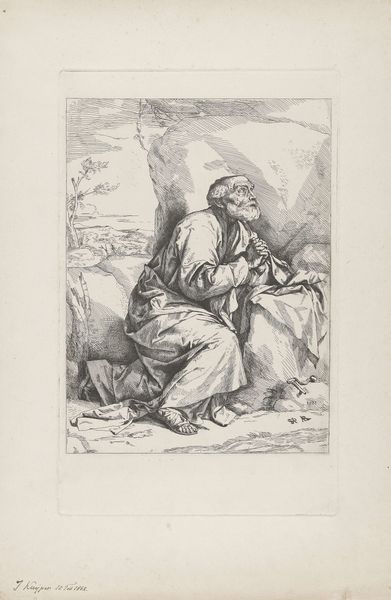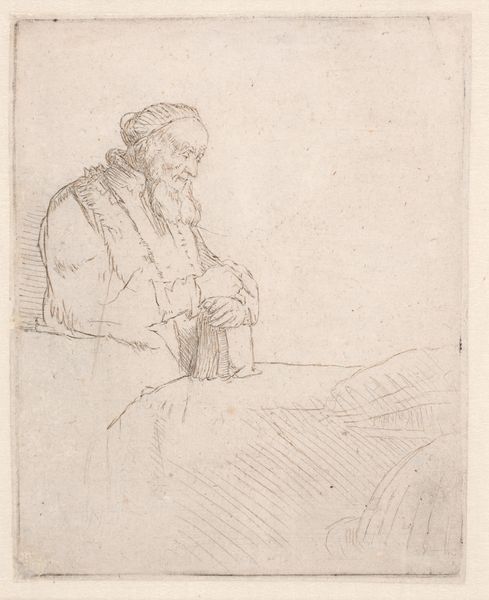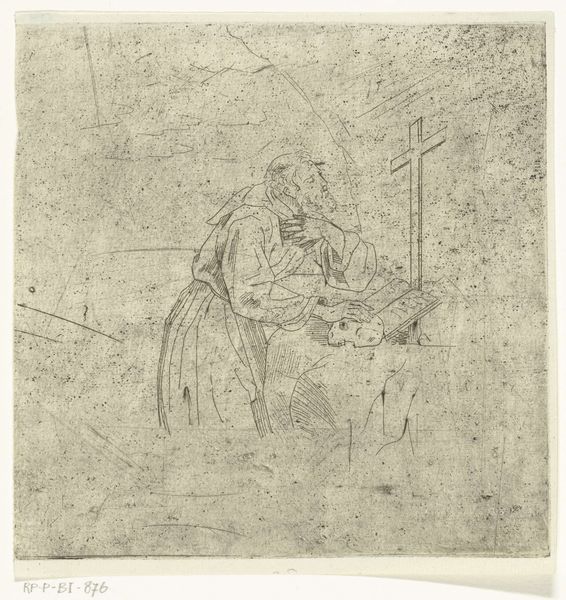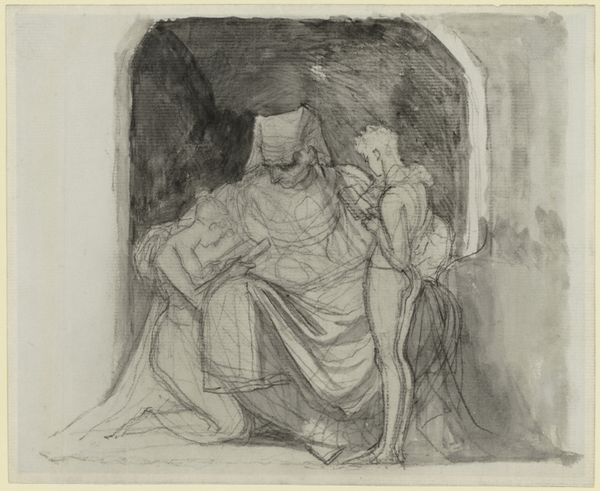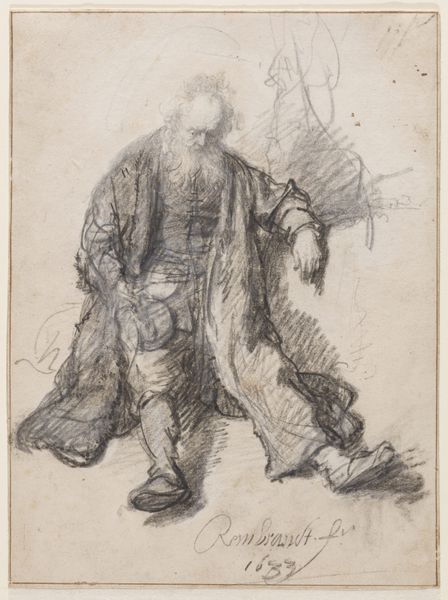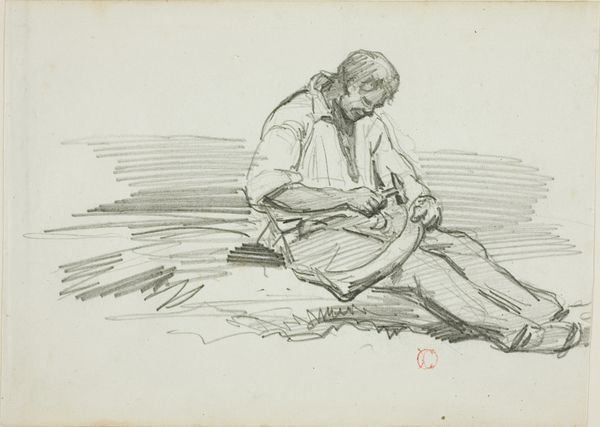
drawing, pen
#
portrait
#
drawing
#
baroque
#
dutch-golden-age
#
pencil sketch
#
pen
#
genre-painting
Dimensions: height 157 mm, width 178 mm
Copyright: Rijks Museum: Open Domain
Curator: This is "Oriental Scholar at a Table," a pen and pencil drawing by Salomon Koninck, made sometime between 1641 and 1656 during the Dutch Golden Age. What strikes you first about this work? Editor: The sketchiness is immediate. There's a sense of capturing a fleeting moment, an intimacy. It also seems very staged, like a posed photograph in the Victorian era depicting an Orientalist fantasy. Curator: Precisely. Koninck, along with many of his contemporaries, engaged with what they perceived as the "exotic" Orient. We see that in the scholar’s turban and the fabrics, typical tropes. It speaks volumes about the period's cultural fascination and appropriation. This fascination manifested itself not only in artworks, but also in global power dynamics in their budding colonies. Editor: Absolutely. I think what's important to acknowledge is how this "exoticism" perpetuated a one-dimensional representation of people and cultures from the East, particularly through these stereotypical garments. It speaks volumes about European dominance in that era and even up until today in shaping cultural perceptions through the media, where they use and abuse exoticised characters, who are at the best naive and benign, but often dangerous and savage. Curator: And let's not forget the intended audience. Patrons often commissioned works like these as a display of their worldly knowledge, to demonstrate that they were "learned." Editor: Right, it reinforced a social hierarchy and legitimized their authority and assumed moral superiority, didn’t it? One man, presented in "oriental" guise as representing wisdom. I mean, just imagine, it is highly probable that he did not have any real connection with the region beyond some literary fantasy. Also, notice the table, and what we presume are instruments on top, probably alluding to sciences from abroad, further solidifying his air of a learned person. Curator: Exactly. So, while on the surface it's a genre painting, it's also deeply embedded within power structures. Koninck likely drew on stock characters and props easily available to him, rather than attempting ethnographic accuracy. Editor: Indeed, and even from an art historical viewpoint, that rapid style also serves as a statement, and begs to ask who is qualified to present whose knowledge. Even the sketch itself reinforces a message about effortless appropriation and, dare I say it, artistic superiority. So while "Oriental Scholar at a Table" presents the illusion of observation, it primarily serves to mirror back European ideals and preconceptions about wisdom and knowledge, making me ask, “knowledge according to whom?”. Curator: Precisely, the artwork raises several considerations that are not easily summarized and force one to reconsider art not as a statement of cultural or individual talent, but a set of encoded social behaviors. Editor: Agreed, art reflects and refracts socio-cultural currents. The artwork forces us to confront and dissect them.
Comments
No comments
Be the first to comment and join the conversation on the ultimate creative platform.

